Diving CDC&Elk
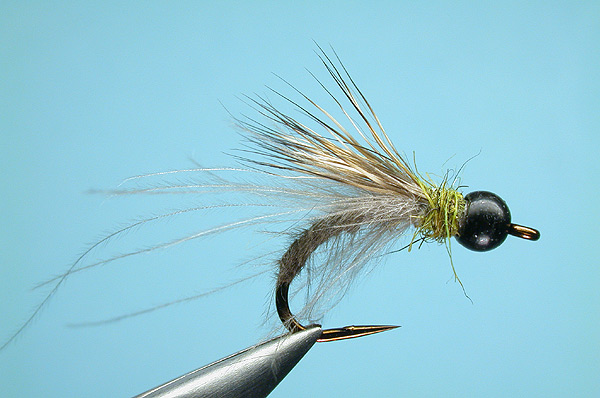
- Slip a bead onto the hook and clamp the hook in the vise.
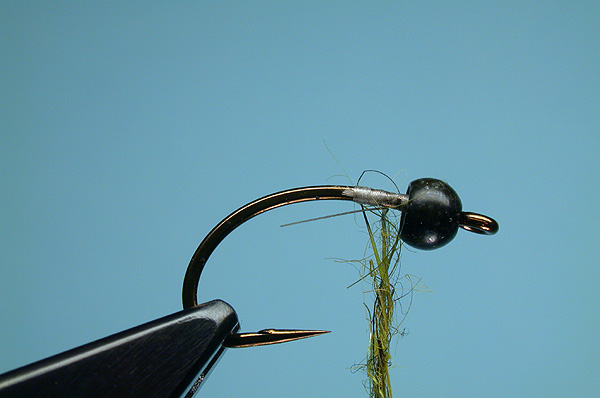
- Attach the thread and dub a small amount of dubbing onto the thread.
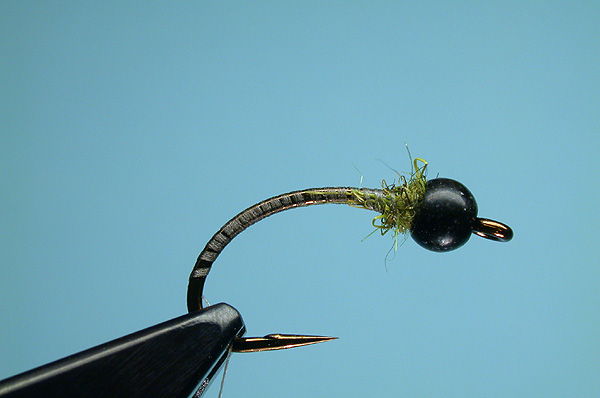
- Wedge the bead up against the eye by building a small ball of dubbing against and partly into the countersunk hole in the bead. Run the thread down the shank well into the bend of the hook.

- Select a (Type 1 or Type 4) CDC feather of the required color and size. (The longest barb approx. 2 times shank-length) Hold the CDC feather at the butt with the fingers/thumb of your left hand, and draw the feather between thumb and indexfinger of your right hand towards the tip, bunching the tips together.
Tie in the bunch, butt pointing backwards over the bend of the hook. Tie down with two tight turns of thread, then slip a third turn under the tips, effectively forcing them upwards, and follow with a fourth turn over the tips, just forward of the third turn. You have now locked the CDC barbules in place and have ensured the feather will not pull out during fishing. Spiral thread forward to back of the bead.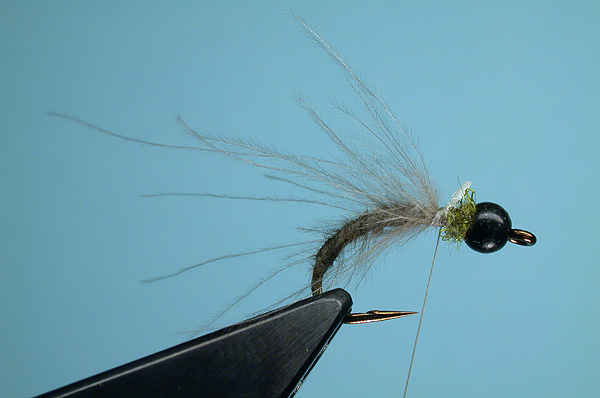
- Grasp the butt of the CDC stem with hacklepliers and wind the CDC feather towards the eye in touching turns. You will find that the rear half of the body will resemble a dubbed body, but as you progress towards the bead, more and more free barbules will stand out. Stroke these backwards with each turn. A little practice will enable you to arrive to just behind the bead with only the bare part of the stem left.
Tie off with one or two tight turn(s) of thread, unclip the hackle but do not trim yet. Tighten with another two turns of thread. You will see that the CDC butt will move with the thread, tightening a fraction further at the tie-off point.
- Trim the CDC butt. Take a small amount of straight, fine-tipped deer hair. (I use early season mule deer) Even the tips in a stacker.
Lay the bunch on top of hook, parallel to the shank. Measure the tips so the wing will be just long enough to reach the outside bend of the hook, and no longer. Trim butts square (perpendicular to the strands) and tie down the wing.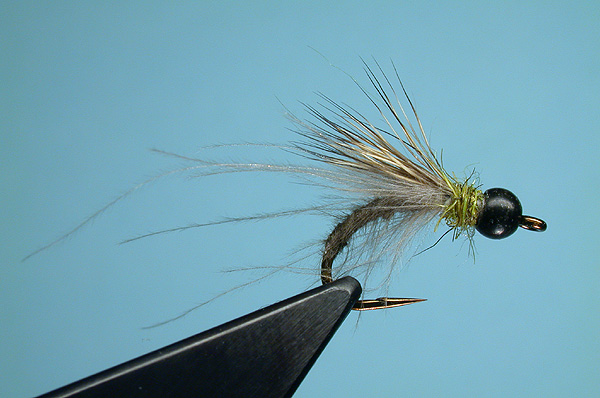
- Dub a small amount of dubbing onto the thread and form a small thorax. Make a whip finish just behind the bead, making the turns of thread sink out of sight between the bead and the dubbed thorax.
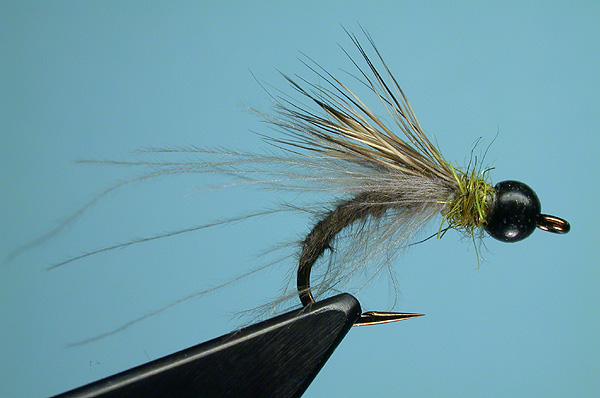
- The completed Diving CDC&Elk.
- Wrap about five or six wraps of lead wire on the bare shank, trim closely, and slide the lead into the countersunk hole at the back of the bead,jamming the bead tight to the hook eye.
- Select wire gauge to fit within the countersunk hole in the bead.
- Start your thread behind the lead wraps, and build up a small cone of thread so that the lead/bead cannot slide backward. This bead mounting method also adds a bit more weight to the fly to get it into the fishing zone earlier in the drift.
Tying instructions:
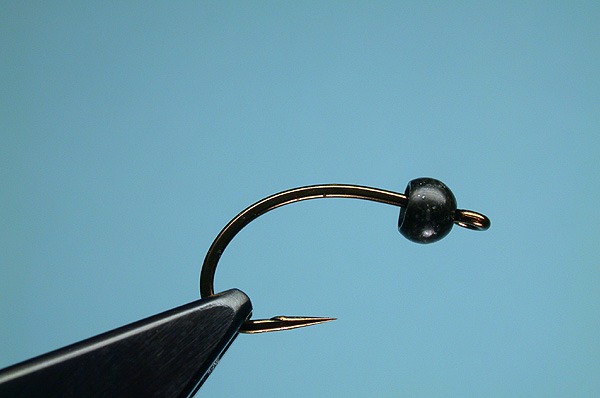
Background:
Tying notes:
(The following technique appears to have been originated, or is publicized, by Gary LaFontaine)
Prior to whip finishing, place a drop of head cement on the top of the bead. As you whip, the thread slipping over the bead will pick up the cement, and cement the wraps "automagically" without fouling the thorax dubbing. Wipe off any excess after the whip.